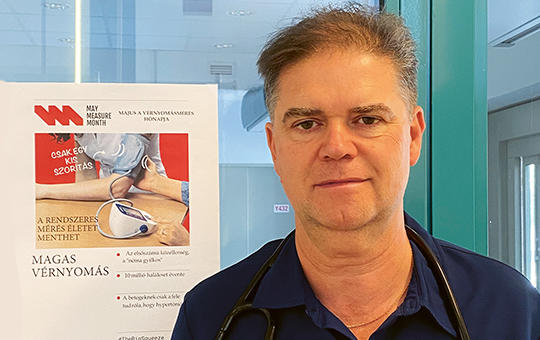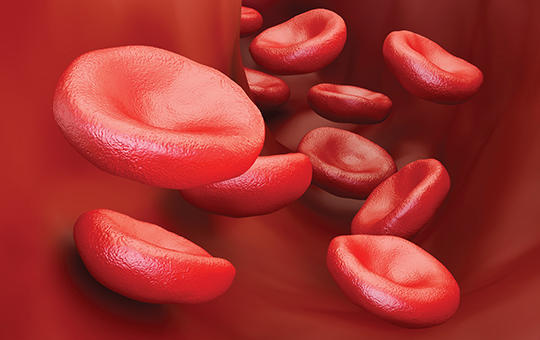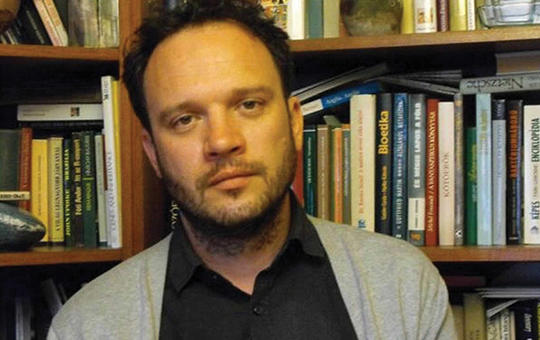The eLitMed.hu medical portal uses computer cookies for convenient operation. Detailed information can be found in the Cookie-policy.
Lege Artis Medicinae - 2024;34(4)
Content
[The misuse of insulin ]
[Discovered in 1922, insulin has saved millions of lives, and improved the quality of life of diabetic patients: it was and is the mainstay of antidiabetic treatment. Like many discoveries, however, it can also be used incorrectly, causing harm and even death. Attempted or terminated suicide as an important example of insulin misuse must be distinguished from accidental, deliberate or factitious insulin overdoses. With increasing prevalence of diabetes and spreading use of pharmaceutical insulin products, such cases are expected to rise. Regular, human and analogue insulins are used for this purpose. Famous killings by insulin were reported in both scientific and lay literature as reality cases, and achieved high rates of publicity. Insulin shock therapy used in psychiatry and post-vagotomy insulin tests can also have side effects or end up lethally. Insulin and insulin-like growth factor are also applied as drugs for doping. Investigations to prove insulin misuse benefit from the most advanced methods of clinical chemistry. ]
[Drug interactions in the elderly, the challenges of combined drug treatment, Beers-list ]
[Drug therapy is one of the basic and often used methods of evidence-based medicine however with its multiplied challenges. Patients respond differently to medications. Moreover, the likelihood of adverse effects is not the same in all patients. One of the reasons for these phenomenon is the old age. The body composition is changing, comorbidities appear, the pharmacodynamics and pharmacokinetics of drugs are also changing, the patients’ compensatory mechanisms and cognitive abilities deteriorate, the immune system may be weakened and the patients’ compliance with therapy may decrease. Keeping all these in mind, drug treatment requires a complex approach, thus it needs close cooperation of doctors, pharmacists, and patients or their relatives. Close follow-up, individual medication, detailed written medication instructions improve the patient's adherence to therapy. Overprescribing is common for older patients because of their polymorbidities. Thus, it is important to be aware of drug interactions, to know the sources of describing interactions (e.g. Beers-list). We can now take advantage also of software guidance to set the right medication. In order to optimize the treatment, it is important to report all observed adverse effects to the authorities, since this way, the new knowledge can be inserted to the product information. ]
[Medical and the life history models in clinical psychology ]
[This study presents the dual nature of the classical medical and the more flexible life history model of mental disorders in the last almost two hundred years of psychological way of thinking. One way of basic interpretations considers the mental disorders as an outcome of any kind of disturbed biological functions. Within this classification, some considerations – according to Rokitansky’s pathological doctrine – couple the mental disorders to the disorders of specific anatomical brain structures. The other way of interpretation complies with Claude Bernard’s ideas, thus mental disorders are of regulatory origin. In our days there were emerging strong evolutionary and neurobiological understandings in the biological mental pathology and the key issue is their interrelation. The other way of traditional interpreting mental disorders starts from life history and the constant interpretive work of humans. Our symptoms are based on special meaning and valance having attributed to life events. As a mainstream in this regard, this study presents the works of Sigmund Freud and Karl Jaspers. The conclusion is that biological ad life history interpretations must cooperate for understanding of mental disorders. ]
[Post-stroke spasticity – What to do with it? ]
[The aim of this review is to raise awareness of spasticity in primary care and outpatient settings, since we can provide this way coordinated support to those affected. As the pathomechanism of spasticity is not cleared in all details, the choice of right treatment modalities with different levels of evidence is challenging not only for GPs but also for neurologists and rehabilitation specialists. Poststroke spasticity (PSS) should be considered as a chronic condition that needs continuous follow-up and care. Its therapeutic principles have changed over the last decade. Complex care consists of interdependent elements and only the right use of which provides a better quality of life. These elements are available in Hungary too, but more organised and conscious care should be applied. Primary care workers (doctors, medical assistants, physiotherapists, caregivers, nurses) play an important role in recognising spasticity itself and its negative impact on bodily functions, and in identifying and treating the underlying causes that increase spasticity, most of which are well manageable. Many therapeutic options of complex spasticity could be delegated to the GPs, but in the current funding system, GPs should rather be involved in recognition and choosing the patients’ right pathway. Spasticity is a very common consequence of many diseases, which affect the central nervous system, including the high stroke prevalence too. Thus, it is reasonable that as many as possible professional teams be able to recognise and treat spasticity, and refer it if needed to a centre where more experience and wider therapeutic spectrum are available. Further, it is necessary to increase the number and competence of these centres by regular professional trainings.]
[Club of broken-hearted women: myth or reality? MINOCA Takotsubo syndrome – case study ]
[MINOCA (Myocardial Infarction with Non Obstructive Coronary Arteries) is a collective term used for several disease with different ethiology and pathophysology. Takotsubo syndrome or “broken heart disease” is a quite new entity, discovered by Dr. Hikaru Sato professor. The first case was documented in 1983, published in 1991 and since then, we have better understanding on patients with ACS without occlusions in coronary arteries. The name “takotsubo” comes from Japan, which describes the shape of the pot traditionnaly used for octopus fishing. The shape of the vessel is similar to the left ventricular “apical ballooning” sign, what we can observe during ventriculography in TTS.The pathophysiology is still not clearly understood, but as far as we know, it is a quite complicated neurohormonal cascade, triggered by emotional and physical stress or iatrogenic factors. In the following case we introduce a young, female patient with ACS, where coronarography was performed but no coronary occlusion was identified, but the ventriculography showed the previously introduced phenomenon and with a twist at the end of diagnostic examinations. ]
[Female aspects of dementia ]
[Dementia is a new epidemic of the 21st century in all aging societies. Besides old age, female sex is one of the non-modifiable risk factors of dementia. Alzheimer’s disease is responsible for two thirds of all dementia cases, two thirds of which are female patients. This female excess is not seen in other degenerative (such as Lewy body or frontotemporal dementia) conditions or vascular dementias. In the background of this additional risk there are primarily hormonal differences suspected. The later developing menopause decreases the risk of dementia. Albeit, the beneficial role of oestrogen seemed to be verified by animal tests and human data, the hormone replacement therapy has not justified the expectations: its outcomes were clearly without benefits in preventing dementia, thus its administration is not recommended in the clinical practice. These contradictory outcomes may be explained by the time window of hormone replacement therapy, which should be explored by further research programs. This study summarises all aspects of female dementia by narrative review of the concerning literature. ]
[Menorrhagia associated with anticoagulant treatment of young thromboembolic female patients ]
[Venous thromboembolism can occur also at young age and needs long-term anticoagulant treatment in specific cases. However, young women on anticoagulant therapy face special problems. One of the most common ones is an increasing and often heavy menstrual bleeding, which may result in anaemia. All anticoagulants can provoke menorrhagia and according to the available evidence, it is mostly associated with administration of activated factor X-inhibitors. Its management requires cooperation of gynaecologists and haematologists. Most cases are well controlled by adjusting the anticoagulant therapy, using hormonal therapy orally or via intrauterine device or administration of antifibrinolytic agents. However, some cases require surgical treatment. While caring for these patients, it is essential to explore the problem by taking accurate history and adequate laboratory tests, to modify the treatment and supplement the loss of iron alleviating this way the symptoms and improving the patient’s quality of life as well. ]
[Artificial intelligence in life science education: opportunities and risks ]
[This study concerns the development of artificial intelligence and deep learning from the perspective of applications in medical and life sciences. It highlights that the increasing amount of health data and advances in computing technology have facilitated the spread of artificial intelligence in medicine and it is now part of the day-to-day medical practice. Artificial intelligence has proven to be an effective tool in medical diagnostics, such as imaging and patient care, improving diagnostic accuracy and efficiency. The rapidly growing medical knowledge and the need to apply new technologies make it essential to integrate artificial intelligence into the whole system of life science education. Artificial intelligence can assist in career pick, choosing of specialization, and the entire educational process (acquisition of knowledge and skills development), including personalized forms of assessment. This study draws also attention to the ethical issues and challenges related to the use of artificial intelligence in health education. ]
[Rare medical case diagnosed by microscopy ]
[The authors present the case of a 60-year-old male patient diagnosed with underlying malignant disease, who parallel to immune and chemotherapy, developed whitish-grey crusted skin plaques on his whole body, especially on the hair scalp, extremities and trunk, accompanied by a general squamous exfoliation. The systemic chemotherapy was delayed due to progressing skin symptoms. Histopathological sampling revealed irregular epidermal ducts and mite sections, which established the diagnosis of crusted scabies. The patient’s immunosuppressed status contributed to the development of severe scabies infestation. Only by topical anti-scabies treatment, all skin manifestations regressed, and he became free of symptoms after 2 weeks. The authors draw attention to the extraordinary clinical feature of this scabies infestation and stress the effectiveness of topical only use of permethrin.]
1.
Clinical Neuroscience
[Headache registry in Szeged: Experiences regarding to migraine patients]2.
Clinical Neuroscience
[The new target population of stroke awareness campaign: Kindergarten students ]3.
Clinical Neuroscience
Is there any difference in mortality rates of atrial fibrillation detected before or after ischemic stroke?4.
Clinical Neuroscience
Factors influencing the level of stigma in Parkinson’s disease in western Turkey5.
Clinical Neuroscience
[The effects of demographic and clinical factors on the severity of poststroke aphasia]1.
2.
3.
4.
5.














